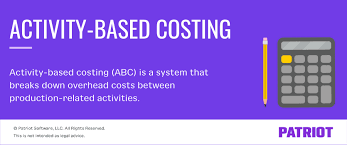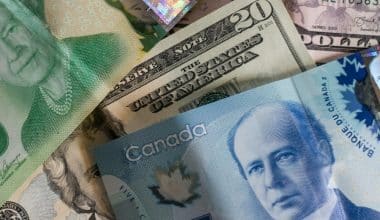Investors are interested in what cash the company has in its bank accounts, as these numbers show the truth of a company’s performance. However, you can use FCF yield to calculate whether your company has enough cash for dividends. Nevertheless, it’s a financial solvency ratio that approximates the free cash flow per share. A company is expected to earn against its market value per share. This article will cover how to calculate FCF yield and the formula for unlevered FCF yield.
What Is FCF Yield?
Free cash flow yield is an important measure for stakeholders. This is because it contributes to a more legal picture of an entity’s economic health than net income. Therefore, FCF yields a financial solvency rate that compares the free cash flow per share. You can evaluate the ratio by taking the free cash flow per share and dividing it by the existing share price. Nevertheless, the Free cash flow yield is similar to the earnings yield metric. This earning yield metic is usually to measure GAAP earnings per share divided by share price.
Free cash flow yield is important as a measure of operating achievement. The better a company’s free cash flow yield is, the more capable and likely it will be in the future. It can also, assure all its debts and obligations which are of particular importance to recent equity investors. They prefer to use free cash flow yield as a valuation measure over an earnings yield. Investors also prefer cash flow yield as a valuation metric over a valuation multiple.
The Free cash flow yield would be a more accurate example of investment returns, compared to yields depending on cash flow. However, is not fully returnable to accounting earnings. Furthermore, Free cash flow yield is a valuable metric for both financial and market analysis and especially for investors. It acts as an indicator of how capable a company can repay and make good on all of its obligations. In essence, it is a solid indicator of how financially stable a company is.
Important Things to Note About FCF Yield
A higher FCF Yield is favorable. This is because it means that a company has enough cash flow to satisfy all of its obligations. It is not favorable when the free cash flow yield is low. However, it means that investors aren’t receiving a very good return on the money they’re investing in the company.
Also, note that the free cash flow yield gives investors an idea of how financially capable a company is. Likewise, having quick access to cash in case of unexpected debts or other obligations. It also gives investors the thought of how much cash would be available if they liquidate the company. Some investors regard free cash flow as a more accurate representation of the returns shareholders receive from owning a business. However, preferring to use free cash flow yield as a valuation metric over an earnings yield.
In addition, cash flow is also a funding source for a company’s long-term capital investments. The company will first use its operating cash flow to meet capital expenditure requirements before tapping any outside financing. Consequently, anything remaining is free cash flow and it becomes available to equity holders.
FCF Yield Formula
The formula for FCF yield is:
FCFY = Annualized Free Cash Flow per Share / Market Capitalization
YCharts calculates this metric as:
FCFY = Trailing 12 Months Free Cash Flow / Current Market Capitalization
Free cash flow yield is just the company’s free cash flow, divided by its market value. there are ways to calculate FCF yield. First, by using a company’s cash flow declaration, withdrawing capital expenditures from all cash flow operations. Then, you can divide the free cash flow value with the company’s value or market cap.
Let’s take this relevant information and product that a ratio is one of the most useful metrics in stock analysis. This ratio expresses the percentage of money left over for shareholders compared to the price of the stock. The ratio is exceedingly relevant to an investor. This is because it relates to the value you are receiving for your investment dollar.
Comparing FCF to market capitalization you produce a percentage of return on the value of stock that can enhance shareholders. This could include dividends, stock buybacks, reduction in debt, or additional investments (i.e. acquisitions).
In conclusion, you should complement your returns analyses by throwing in how you calculate an FCF Yield. FCF Yield in most of the investment committee memos worked on in private equity.
Importance of Free Cash Flow
Free Cash Flow is a part of analyzing the strength and health of a company. A company with negative FCF may not have the liquidity to stay in business without receiving additional cash through borrowing. Declining cash flows are a warning sign that the company’s future earnings may not be able to grow.
A company with a positive net FCF is generating the cash needed to pay operating bills. Regardless, meeting working capital requirements. Also, to pay taxes, meet current interest and debt payments, invest in capital expenditures and pay dividends. Rising cash flows can indicate a company is healthy and many times precedes increasing earnings and enhanced shareholder value.
FCF Yield determines if the stock price provides good value for the amount of free cash flow you will get. In general, especially when researching dividend stocks, yields above 4% would be acceptable for further research. Yields above 7% would be of high rank.
Unlevered FCF Yield
Based on whether an unlevered or levered cash flow metric is in use, the free cash flow yield denotes how much cash flow that belongs to the investor group. Cash flow generative companies are self-sufficient in being able to fund their own growth plans. However, which is worth more and valued at higher multiples by the market.
If the cash flow metric used as the numerator is “unlevered” the corresponding valuation metric in the denominator is enterprise value. On the other hand, if the cash flow metric is “levered” FCF, then the matching valuation metric would be the equity value. FCF yield metrics are similar to valuation multiples in that the cash flow metric is standardized to show a per-unit basis of the valuation.
By standardizing in this way, the yields can be benchmarked against comparable companies (of different magnitudes of FCF), as well as to the company’s historical performance. Otherwise, the FCF amount by itself would not provide much insight into the positive (or lackluster) progress of the company or how its recent trajectory lines up against its industry peers. Another similarity to valuation multiples is that unlevered metrics are more widely in use. Therefore, the unlevered FCF yield tends to be used for a broader range of purposes, while the levered FCF yield is more often tracked by private equity firms as well as investors in the public markets. The unlevered FCF yield depicts the overall performance of the company on an operational level, and it can show the amount of remaining cash that could be put to use in order to benefit all providers of capital (debt and equity).
Unlevered FCF Yield Formula & How to Calculate It
Here, we will be discussing the formulas and how to calculate the unlevered FCF yield. FCF yield metrics are similar to valuation multiples in that the cash flow metric. However, it is standardizing shows the per-unit basis of the valuation (denominator).
Unlevered FCF Yield = Free Cash Flow to Firm / Enterprise Value.Unlevered FCF yield Calculation
Since revenue is $100mm and the EBITDA margin assumption is 40%, EBITDA comes out to $40mm. You then subtract the $10mm in depreciation and amortization (D&A) for an EBIT of $30mm.
This figure will be the tax that affects the 30% tax rate, which will be a $9mm reduction to get $21mm in net operating profit after taxes (NOPAT). Because they do not subtract interest from EBIT before applying the tax, shows the removal of the interest from the equation. With NOPAT calculated, we can begin working our way towards free cash flow to the firm (FCFF), or unleveled FCF.
As D&A is a non-cash expense, you will add back the $10mm from earlier, which you originally subtracted because D&A is tax-deductible. But unlike interest, D&A is a core, operating line item that impacts all stakeholders.
Once you subtract the re-investment needs of the company, the $5mm in CapEx, and $3mm in the change in net working capital (NWC), you will then arrive at the FCFF of $23mm. Cash-flow generative companies are self-sufficient in being able to fund their growth plans themselves and are thus worth more and valued at higher multiples by the market.
Unlevered vs Levered FCF Difference
The main difference between the two is that unlevered metrics are wider Therefore, the unlevered FCF yield tends to be for a broader range of purposes. The levered FCF yield is more often tracked by private equity firms as well as investors in the public markets. The unlevered FCF yield depicts the overall performance of the company on an operational level, it can show the amount of remaining cash that is in use, in order to benefit all providers of capital.
For instance, the cash could be in use to pay down mandatory debt and obligations. Also, meet interest expense payments, issue a dividend to preferred equity holders, repurchase shares, or reinvest into the business. Use the enterprise value as the corresponding valuation metric which also represents the entire value of the company capital.
What matters more than the absolute metric itself is how the FCF yield compares on a year-over-year basis. Also, for the company to understand and evaluate why the yield has to change. From the perspective of a private equity investor, if the levered FCF yield increases over time, it shows a positive sign. However, it signifies downside protection and the ongoing ability of the Company to meet its debt obligations.
Levered Free Cash Flow (FCF) Yield Formula
In contrast, the formula for the levered FCF yield is the levered free cash flow divided by the equity value. Since the free cash flow to equity pertains only to equity holders, you must use the equity value in the denominator to match the represented stakeholders.
Levered FCF Yield = Free Cash Flow to Equity / Equity Value.
Alternatively, the levered FCF yield can calculate the free cash flow on a per-share basis divided by the current share price. In short, the levered FCF yield tells equity holders the amount of residual free cash flow allocatable to each unit of equity value.
Levered FCF Yield = Free Cash Flow Per Share / Current Share Price.
The levered FCF yield formula can gauge the returns to equity holders relative to the share price of the company. The main shortcoming of the dividend yield metric, however, is that not all companies issue dividends. As a result, the levered FCF yield tends to be more relevant and broadly used.
There is no single levered FCF yield that investors or operators target since the returns will vary by industry. Furthermore, the levered FCF yield impacts other factors such as the financial mix and required amortization of debt. That being said, the levered FCF yield is usually viewed as more of an internal measure rather than a comparison metric against other competitors.
Is FCF yield multiple?
In that the cash flow metric (numerator) is standardized to indicate a per-unit basis of the valuation, FCF yield metrics are comparable to valuation multiples (denominator).
How do you interpret FCF yield?
An ideal free cash flow yield is one where the company has sufficient free cash flow to meet all of its obligations. Investors aren’t getting a great return on their investment in the company if the free cash flow yield is low.
Why is FCF yield important?
For any firm, big or small, free cash flow yield is crucial since it serves as an accurate measure of cash flow relative to the size of the business. A company’s cash flow is always a crucial indicator of its performance because it primarily communicates this information to investors.
Is increasing FCF good?
Free Cash Flow: What Does It Mean? Increasing free cash flows usually come before rising earnings. Companies with soaring FCF today could reward investors tomorrow if they increase sales, become more efficient, cut costs, repurchase shares, pay dividends, or pay off debt.
Is negative FCF good?
Therefore, the corporation is investing in its future growth as seen by the negative cash flow from investing. On the other hand, a negative cash flow from investment operations may be a warning indication if a corporation experiences it as a result of making poor asset-purchasing selections.
Is FCF the same as profit?
Is profit the same as free cash flow? Free cash flow (FCF) is not the same as overall net income but is a measure of a company’s profitability. The amount of profit that a business report over a specific time period is known as net income.
How is FCF different from profit?
Profit is the amount of money left over after all expenses have been paid, whereas cash flow is the net flow of cash into and out of a business. This is the main distinction between cash flow and profit.
FCF Yield FAQs
Is high FCF yield good?
A higher free cash flow yield is ideal because it means a company has enough cash flow to satisfy all of its obligations.
How do you find free cash flow yield?
You can find FCF yield from the perspective of common equity holders, the Free Cash Flow Yield calculation is as follows: FCFY= Free Cash Flow to Equity (FCFE) per share/Market Price per share.
Is FCF yield levered or unlevered?
The levered FCF yield comes out to 5.1%, which is roughly 4.1% less than the unlevered FCF yield of 9.2% due to the debt obligations of the company.
Related Articles
- Property Valuation: How to Value Your Real Estate Investment & Properties.
- Business Valuation: All you need to know [Detailed Guide]
- CASH FLOW: All you need to know, Simplified!!! (+ Free format)
- Stock Valuation: Overview, & Effective Valuation Methods
- Cash flow management: Best ways to manage your cash flow effectively






